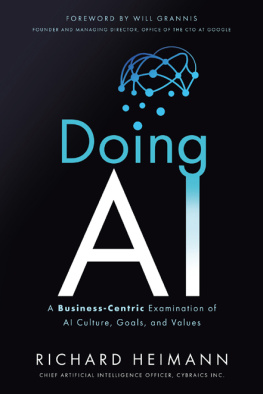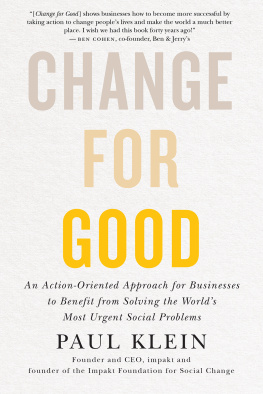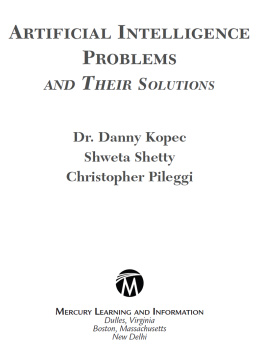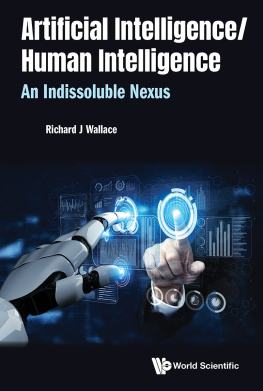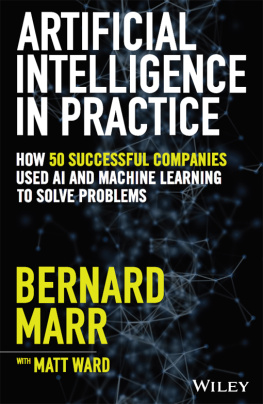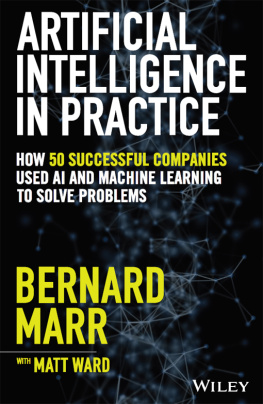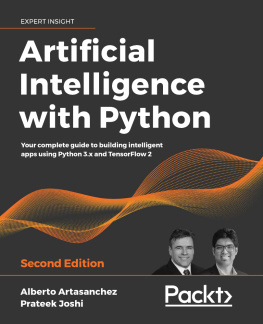Contents
Guide
Praise for Doing AI
Richard shares several powerful ideas that he has discovered by examining the intellectual history of AI from the vantage point of a business leader and advanced practitioner working on machine learning. It is a refreshing reminder that practitioners deserve to be listened to as much as, if not more than, theorists working on AI. Ultimately, Doing AI is an essential book for technology leaders interested in AI, business, and the intersection of the two. If you want to use AI to serve customers, get this book.
Abe Usher, co-CEO of Black Cape
Richard has written the book on AI that I have been threatening to write for years. Surrounded by so much hype and pseudo-philosophy, AI has become, for many, a goal in itself. However, like most solutions seeking problems, it never quite delivers the promised value. Richard challenges the prevailing thinking and has the reader refocus on what matters: solving problems. At once a thoughtful history and how-to guide, this book is a must-read for anyone interested in the truth about AI and how to actually benefit from it.
Isaac J. Faber, PhD, Chief Data Scientist, Artificial Intelligence (AI) Task Force
Richard digs into the intellectual components of AI but, unlike many other books on the topic of AI, he does so from the point of view of business. Doing AI argues that our solutions have never been better but they are not a solution to everythingbut no solution is. These technologies solve problems, often they create new problems, and sometimes distract us from our problems altogether. This is a timely book to help smart people understand what AI is and is not, what others want it to be, and ultimately what businesses need solutions to be.
David Meerman Scott, bestselling author of The New Rules of Marketing and PR
When I was researching AI in grad school, we joked that it is no longer AI once the software engineer solves a real-world problem. But AI is sexy. So the marketers label any semi-intelligent feature AI. Richs Doing AI is a down-to-earth, business-focused way of looking at what is AI that is relevant to how you do business better. Read it if you want a realistic view of how AI should be done in business.
Peng T. Ong, Cofounder and Managing Partner at Monks Hill Ventures
AI is an ill-defined pursuit buoyed by misleading hypeso, someone had to drill a hole through it! This book does just that, drawing back the curtain to reveal AIs false narrative, its outlandish claim to beor at least soon bethe ultimate one-size-fits-all solution, a silver bullet capable of solving all problems. This single-solution fallacy is antithetical to prudent business. A business that buys into it is a business that fails to identify and address problems and fails to provide value to customers. Author Richard Heimann takes this on with a style so crisp, clear, and unique, it just pops off the page. He comprehensively surveys the litany of troublemakers whove misguided the world with AI mythology, but then greets this mishap with the ultimate business-savvy antidote: how to effectively identify and solve real-world problems. This book will repeatedly make you go hmm! as it overhauls your thinking about AI, machine learning, and problem solving in general.
Eric Siegel, PhD, Founder of Predictive Analytics World and instructor of Machine Learning Leadership and PracticeEnd-to-End Mastery
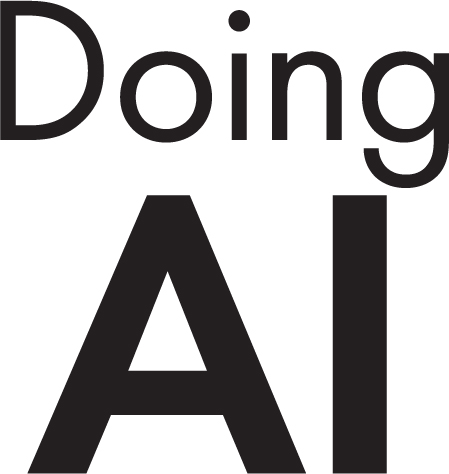

This book is designed to provide accurate and authoritative information about entrepreneurship. Neither the author nor the publisher is engaged in rendering legal, accounting, or other professional services by publishing this book. If any such assistance is required, the services of a qualified financial professional should be sought. The author and publisher will not be responsible for any liability, loss, or risk incurred as a result of the use and application of any information contained in this book.
Doing AI copyright 2021 by Richard Heimann
All rights reserved. No part of this book may be used or reproduced in any manner whatsoever without written permission of the publisher, except in the case of brief quotations embodied in critical articles or reviews.

Matt Holt Books is an imprint of BenBella Books, Inc.
10440 N. Central Expressway, Suite 800
Dallas, TX 75231
benbellabooks.com
Send feedback to .
BenBella is a federally registered trademark.
Matt Holt and logo are trademarks of BenBella Books.
First E-Book Edition: December 2021
Library of Congress Control Number: 2021030418
ISBN 9781953295736 (trade cloth)
ISBN 9781637740071 (ebook)
Editing by Greg Brown
Copyediting by Eric Wechter
Proofreading by Denise Pangia and Greg Teague
Indexing by Amy Murphy
Text design and composition by PerfecType, Nashville, TN
Cover design by Paul McCarthy
Cover image Shutterstock / Syifa5610
Special discounts for bulk sales are available. Please contact .
To all the problems left orphaned by solution-centric thinking.
Contents
I ve known Rich for nearly half my professional life. We met when I was a newly minted Chief Technology Officer at a Fortune 500 organization, and he was an up-and-coming Data Scientist arriving at the company as a result of an acquisition.
In those days, our collaboration usually went something like this: Id ask Rich how quickly he could get something done, and Rich would then ask me why we were doing something in the first place. Our CEO and Board wanted to know how we were going to monetize AI-based solutions (reasonable), and after all, didnt all those executives and industry analysts already define for us what problems we should solve? So why slow down and retread back into problem-definition on a constant basis?
What I didnt know at the time was how clueless I really was about how best to apply different facets of artificial intelligence (AI) to different problems. As a fast-rising entrepreneur and technology executive, my success up to that point was predicated on creating matches between engineering projects (solutions) and business needs (problems). And it was always in that order: What solution did we have, and what problem could we solve with it?
And I was exactly wrong.
Time and time again, the question of what and why would lead us in new directions. Taking principles from design thinking and agile product development, paired with deep expertise in data and AI, we could start to piece together the how. Wed uncover blind spots and biases that our customers would not only take an interest in but would reward us for uncovering. For them, operating at scale meant that papering-over a tiny flaw or accepting less than specific and measurable benefits from our work could result in millions if not billions in wasted spend, ruin careers, and potentially send companies and industry leaders spiraling toward oblivion. For those projects that had global stability implications, the stakes were even higher.
Over the past ten years, Rich has shifted my thinking, and the results have been unexpectedly profound. Today, I lead arguably the best collection of CTOs at one of the worlds largest and most important AI technology companies, and the lessons that Rich taught me come into play on a daily basis. They inform me and our cross-functional teams in sales, engineering, product management, and marketing, and they help our customers through nuanced endeavors where the heat of solutions is always tempting us away from truly understanding problems.
Next page

